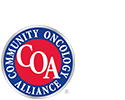Three Pillars of Health Care Success: Cost Savings, Prevention/Patient-Centered Care, and Access to Care
Welcome to www.RealWorldHealthCare.org, a blog dedicated to showing what’s working to improve health care in the U.S.
Why are we talking about improving access to good medical care? Rising costs could bankrupt us, and most people need to do a better job of preventing illness. But digging deeper, you may be surprised to learn that almost 10 percent of the U.S. population (that’s 29 million Americans) can’t afford the health insurance copayments, coinsurances and deductibles required to cover out-of-pocket costs for necessary treatments of certain chronic and life-altering medical conditions. The situation is so dire that about 60 percent of the personal bankruptcies filed in the U.S. are due to medical expenses.
As we see every day in the news, patients are facing more obstacles in accessing affordable, quality care. As across-the-board cuts to health care programs are now taking effect with implementation of the sequester – along with projected layoffs to health providers across fields – available funds to cover the rising cost of care will be strained even further. Staying abreast of the latest proven solutions to the increasingly complex challenges of our health care system is more important than ever, for patients and providers alike.
We want our blog to be the go-to source for demonstrating what’s working in our health care system by focusing on three important pillars of health care success: Cost Savings, Prevention/Patient-Centered Care, and Access to Care.
Cost Savings: No patient – adult or child – should go without health care because he or she cannot afford it. The first step to finding solutions to the increasing cost of care is enabling health care systems and health care professionals to share their practical knowledge with one another as well as the patients who often have to choose between paying their medical bills and putting food on the table. From paying for prescription drug copayments and deductibles to affording health insurance premiums, our Cost Savings posts will explore proven strategies to help patients and families reduce the financial strain associated with the rising price of care.
Prevention/Patient-Centered Care: What’s the first thing you think of when given the words “health care?” Most people think “trip to the doctor,” or “medication.” Our attention has to shift more aggressively to find ways to help people stay healthy. Seeing a dietitian could be vital for millions of Americans hoping to live healthier and longer. Annual lab work can find vitamin deficiencies. Sometimes very simple things, like removing carpeting from the home, can contribute to better cardiovascular health, resulting in increased life expectancy. It takes a village to care for a patient. Partnerships among practitioners, payers, patients and their families are crucial for ensuring that health care decisions are made in a way that respects patients’ needs and that patients have the knowledge and support they need to make reasoned decisions and participate in their own care. In our Prevention/Patient-Centered Care blog posts, we’ll focus on the many strategies available for staying healthy and recognize ways that patients are taking an active role in decision-making about treatment options.
Access to Care: We are so fortunate to live in a world where scientists are developing novel, breakthrough therapies. But those therapies can’t result in positive health outcomes if the patients who so desperately need them can’t access them. The evidence is clear: Proper medication compliance and adherence – consistently the right medication, at the right dosage, for the right patient – is essential to mitigating chronic disease. Continued and properly managed care and staying on treatment will be the focus of our Access to Care blog posts.
We’ll be sharing real-life examples of positive health outcomes in this space, and we encourage you to join in the dialogue. How would you tackle the problem of unaffordable health care? How can business and philanthropy work together to reduce the financial burden on patients? Have you or someone you know received help paying for needed therapies? Let us know in the comments section.

















